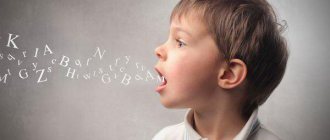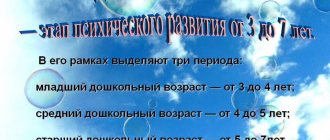What did Jean Piaget find out?
In short, Jean Piaget developed his theory of personality development by processing intelligence tests of people of different ages. I once noticed that some children make the same mistakes that are not typical of the older generation. This led him to believe that children's cognitive processes and ways of thinking differ from those of adults. After some time, he developed a theory according to which people at the same stage of development have similar general forms of cognitive and cognitive abilities.
Phenomena of thinking
Among the phenomena in a child’s thinking, we can distinguish the following: animism: a child may believe that all moving objects are alive: the sun, the moon, clouds, a car.
Another feature of thinking is materialization: objects and people from the fantasy world become absolutely real for them. So, if a child falls, he can blame the road he was walking on for his fall. Or believe that the vase fell because she wanted it to. A two-year-old child has little understanding of what is real and what is not.
The emergence of animism and materialization is partly explained by another characteristic of the thinking of children of this age: egocentrism. This term refers to the tendency of children to see and understand things exclusively from their own point of view, i.e. the child cannot take the point of view of another person or look at the situation abstractly, or separate from it. In addition, at two years old, the child sincerely believes that his parents know what he is thinking about (that they can read his thoughts). And that other people feel and think the same things as he does.
Bottom line
In cognitive terms, during this period the following is formed:
- The initial concept of the world - what it consists of, what happens in it, according to what laws;
- The ability to establish connections and relationships between objects;
- The ability to generalize and transfer acquired experience to other objects and situations;
- Ability to solve specific problems by experimenting with objects;
- The ability to solve basic problems “within oneself.”
- Voluntary attention;
- The memory capacity and duration of memorization increases;
Read more about how to develop a child’s thinking and curiosity at 1-3 years old.
Pre-operational stage (from 2 to 6 years)
The second stage generally corresponds to preschool age (it must be taken into account that the age indicated in this theory is approximate). It was called pre-operative, because. At this stage, children do not understand operations - logical manipulations, and do not know how to think logically. Operations refer to procedures such as division, union and other transformations that require logical thinking. In other words, a child at this stage, especially at its beginning, is not able to use logical categories and operations: classify, compare, evaluate, measure, etc.
However, at this stage, a very important feature is observed - children master speech and begin to actively use symbolic thinking. Those. they use words and symbols to represent objects, groups of objects, images and ideas, and actively use imagination and symbolic play. Thus, cubes can become kingdom subjects or buildings, and a child’s hands can become airplane wings. Such play and the ability to “pretend” is actually an important cognitive achievement—a degree of abstraction not available to great apes and other animals.
Jean Piaget believed that children at this stage are unable to maintain attention on more than one aspect of a situation or characteristic, and in addition, children's logic is based on personal experience rather than generally accepted rules and laws. Thus, at the age of 3-4 years, children are not able to understand the concept of conservation of matter. The principle of conservation is the understanding that the amount of a substance will remain the same even if its shape changes. For example, if you pour water from a short and wide glass into a tall and narrow one, there will be the same amount of water in it. And if you roll out a ball of plasticine into an oblong sausage, the amount of plasticine will not change. Such operations become available to children only at the next stage of cognitive development.
To see what the logic of children at an early stage of the pre-operational stage of development (who have not yet mastered the principle of conservation of mass and quantity) looks like in life, watch this video. (https://www.youtube.com/watch?v=ZDNi4z5tdqU)
Another distinctive feature of this stage is children's egocentrism. In this context, this means that a child up to the age of approximately 3 years perceives the world as an extension of himself, exactly as he sees it, without realizing and often with difficulty accepting points of view that differ from his own. At this stage, it is natural for children to believe that everyone sees and perceives the world exactly the same as they do, and has the same feelings, thoughts, preferences and desires.
Between about 3 and 5 years of age, children begin to realize that other people have their own points of view, feelings and thoughts, and they perceive the world differently, in their own way. This phenomenon is called the model of the human psyche (or theory of mind, in English).
The pre-operational stage is replaced by the stage of concrete operations, at which children demonstrate a greater ability for logical thinking. We will consider this, as well as the fourth stage - formal operations, in detail next time, as well as valuable practical considerations and recommendations for parents.
In the meantime, we invite you to our program “Cognitive Science. Development of thinking." This online training will be useful to all those who want to learn to reason logically and consistently, quickly make effective decisions and find innovative approaches to difficult problems.
Good luck!
Thinking
The child’s thinking during this period is limited to a visual situation ( situational thinking ) and develops against the background of practical activity. He solves all the problems facing him with the help of practical actions that are clear to him in the present tense. The child acts with objects and thus grasps the connections between them. Up to two years there is a process of active experimentation by trial and error. The child explores objects by influencing them in new ways.
Persistent reproduction of the same simple actions and obtaining the expected effect (opening and closing boxes, drawers, making sounds from sounding toys, the actions of one object on another, etc.) give the baby an extremely important sensory experience, which forms the basis for more complex, internal forms of thinking. The child learns the essential and functional characteristics of objects. Such knowledge captivates the baby and brings him new emotions - cognitive ones: curiosity, surprise, joy of discovery. Cognitive activity and the development of thinking are manifested not only in the success of solving practical problems, but above all in the pleasure that the child receives from independent research. The child endlessly enjoys exploring new things.
An important characteristic of thinking is the ability to transfer the found method of solving a problem to new objects and conditions. The study of objects and knowledge of the world leads to the fact that in the second year of life the child distributes objects into categories, but not according to the similarity of appearance, but according to the similarity of their functions and behavior. Now the child understands that certain actions are suitable for some categories of objects, but not for others. For example, you can feed imaginary porridge from a spoon to a teddy bear, but you cannot feed a toy car.
At 18–24 months, symbolic thinking —the ability to solve practical problems without openly experimenting with actions, the ability to transfer, and transfer actions to the internal plane. For example, a child can pretend to drink from a cup using a cube instead, or imagine that a mother doll is feeding a daughter doll. The sign function of consciousness begins to form. The child may act “as if,” replacing real objects with similar or imaginary symbols (for example, acting with a stick as a spoon or a cube as a cup). Thus, there is a gradual development of solving problems in the mind - the beginnings of “thinking within oneself.”
Memory
Memory processes improve throughout early childhood. These include: storage, recognition and reproduction. By 14 months of age, the duration of information retention increases to a whole week. A child at this age can remember not only individual actions, but also the simplest chains of actions. By 20 months of age, a child can reproduce a sequence of actions not only immediately after presentation, but also with a 2-week delay. Later in development, the ability to reproduce significantly improves. In general, a child’s memory is still involuntary—the child does not specifically set a task to remember.











